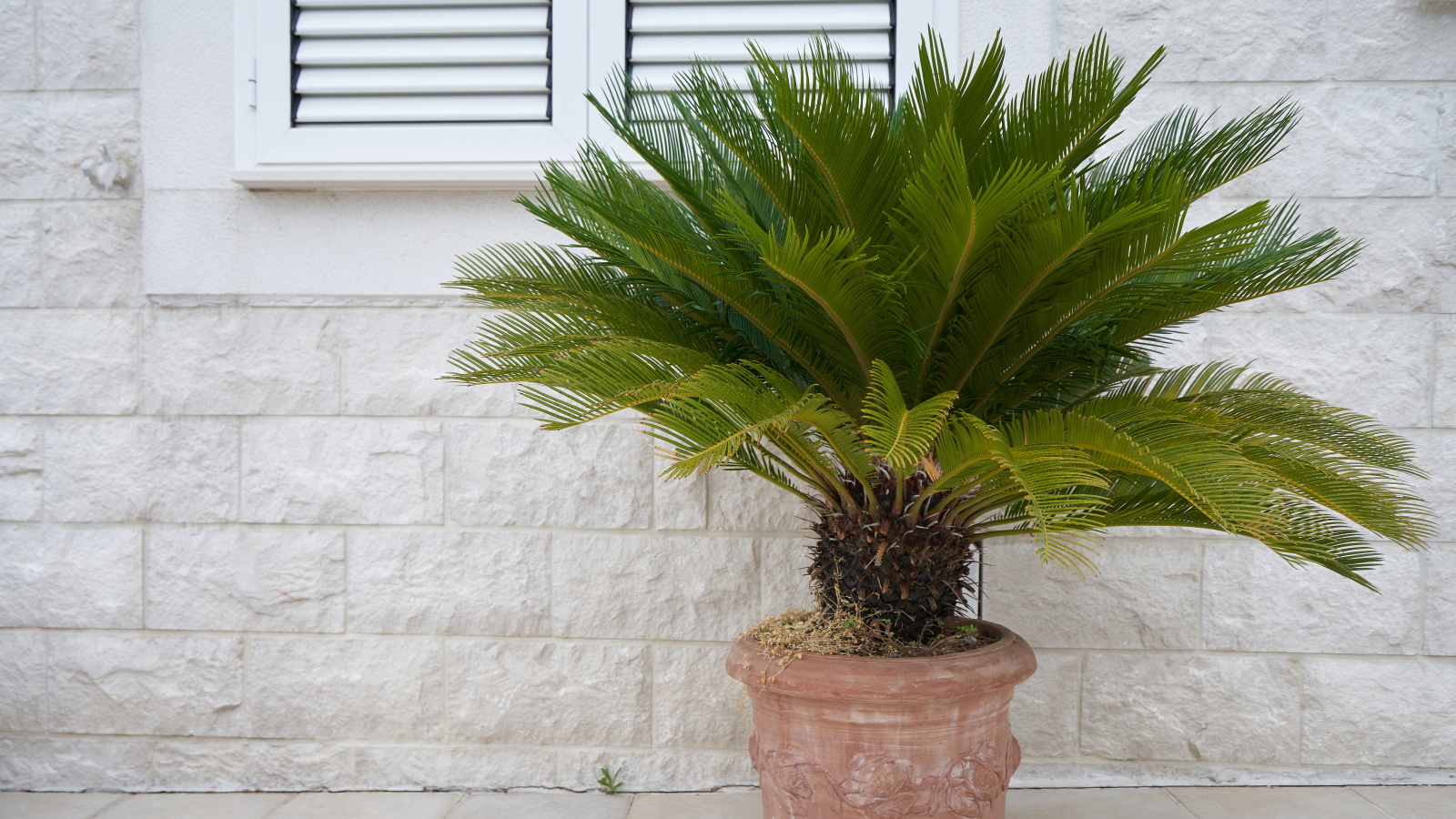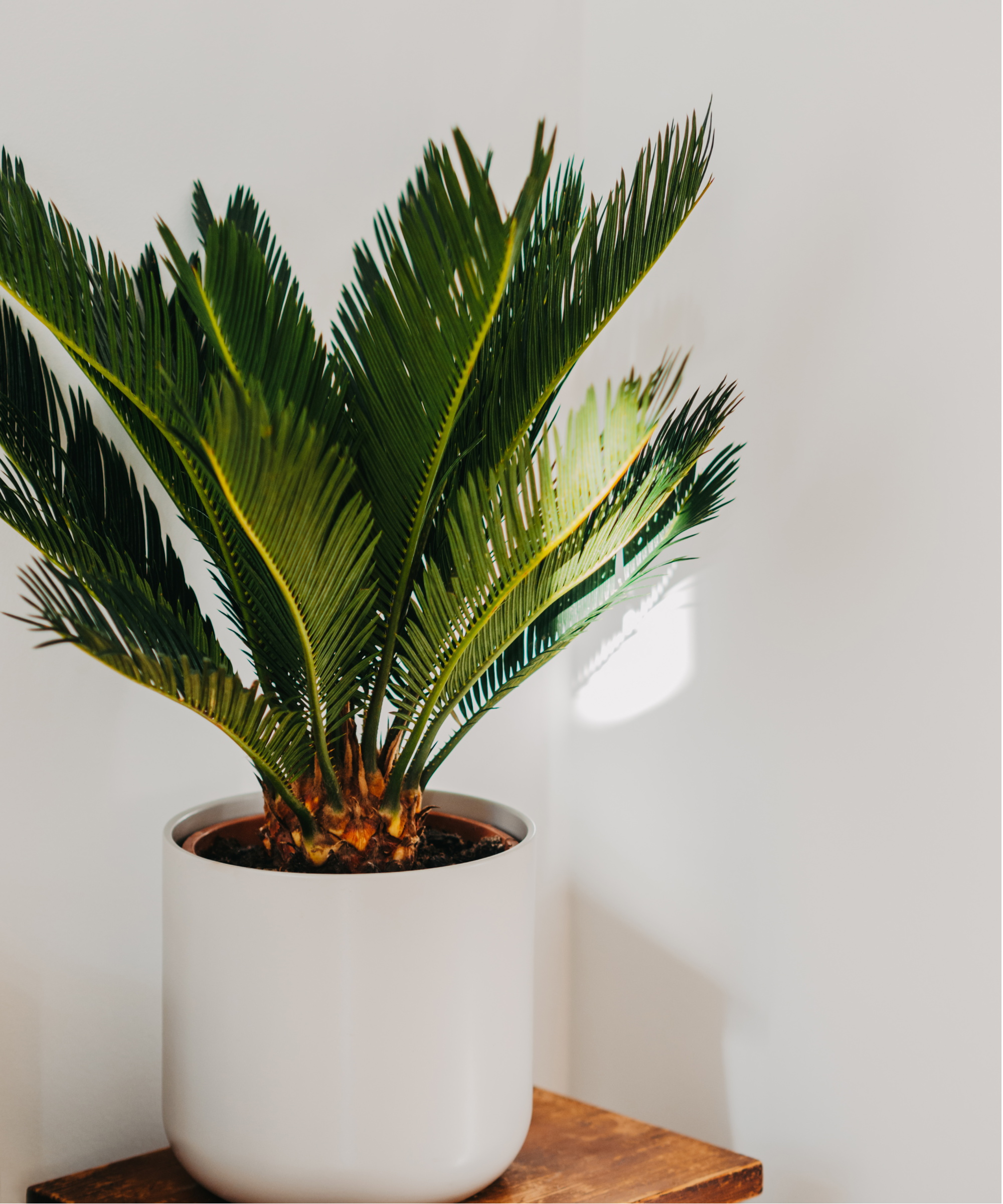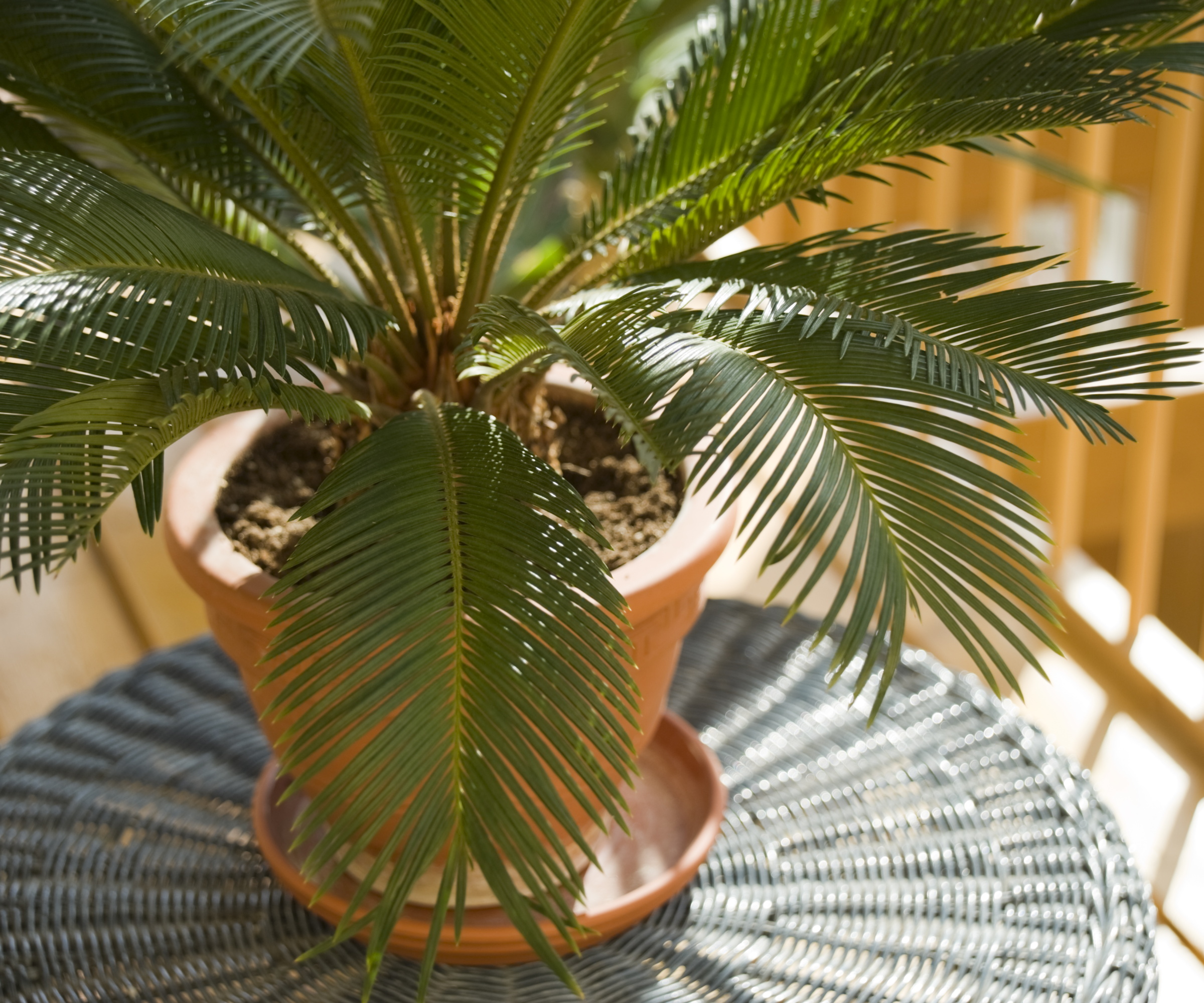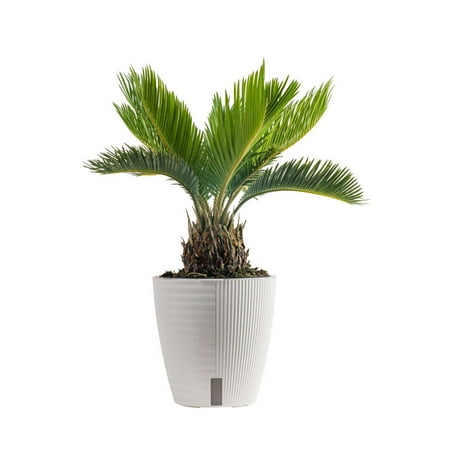How to care for a sago palm – 3 tips houseplant experts recommend to keep this statement plant looking luscious
This prehistoric plant is now a popular houseplant for its feathered foliage and low-maintenance nature


As an avid houseplant collector, I personally love to have a few plants with large, statement foliage for my indoor display. They instantly green up interiors and make you feel as though you have been transported somewhere tropical.
Sago palms are arguably one of the best indoor plants with large foliage to choose from. Also known as Cycas revoluta, sago palms are native to southern Japan and have become popular houseplants across the US. They can also be found growing outdoors in many southern regions of the US. Although it is in their name, they're not actually a type of palm at all, but rather a type of cycad - some of the oldest living species on the planet, first appearing around 280 million years ago.
While you might look at an impressive plant like a sago palm and assume it's a lot of maintenance to care for, sago palms are actually an easy indoor plant to grow. Here, houseplant experts have shared with me just a few simple rules you need to follow to care for a sago palm correctly.

How to care for a sago palm
Something to be aware of before bringing a sago palm into your home is that it is highly toxic to dogs and cats. 'Dogs may like to chew them, so it is imperative to keep your pets away from them,' advises Lisa Eldred Steinkopf, plant expert at The Houseplant Guru. Instead, you might want to choose an alternative plant from our expert list of pet-safe indoor plants. With that being said, here are three tips houseplant experts want you to take on board to care for a sago palm successfully.
1. Give your sago palm a sunny position

In their native habitat, you'll find sago palms soaking up the sun along hillsides, rivers, and lakes. In the home, it's key to replicate this growing environment as much as possible.
'These are indoor plants for direct sunlight. If you have an unobstructed south window, that would be best,' Lisa says. 'Too little light will cause your plant to decline and could eventually die,' she warns.
However, something to be aware of is sago palms can also experience leaf scorch from too much exposure to a full sun position. In this case, you might find it useful to move your sago palm a few feet back from the window, or use these sheer curtains from Wayfair to create filtered bright light.
It's likewise important to stick to essential houseplant winter care for sago palms and use grow lights for houseplants on darker days to ensure it is gaining sufficient light levels. This grow light from Amazon is tall enough to stand above these large plants.

Lisa is a houseplant expert who runs her blog The Houseplant Guru with over a decade of professional experience at Steinkopf Nursery and Garden Center in Michigan. As a child, Lisa helped her grandma tend to African violets and other houseplants. Since then, Lisa has forged a career providing houseplant advice, holding lectures and writing for publications across the US.
2. Let your sago palm's soil dry out

Knowing when to water houseplants can be a tricky thing to master, especially when you have a wide range of plants all with differing needs. That's why I long ago ditched a rigid watering schedule and instead check my plants' soil each time before watering. This is the same method experts recommend for watering a sago palm.
'Sago palms are very drought-tolerant. Water only once the soil is completely dry,' advises Jeannie Psomas, plant expert and owner of The Plant Lady: San Francisco.
I like to use this soil moisture meter from Amazon to identify how dry my plants' soil is. When it indicates dry all the way down your sago palm's pot, it's time to pick up the watering can and give this plant a deep watering.
'Use a planter with drainage holes and empty the saucer after approximately 30 minutes after watering,' Lisa says. 'Never leave your plant standing in water,' she adds. This is because sago palms can turn yellow from overwatering and may suffer issues of houseplant root rot.

This sago palm comes in a 6-inch self-watering pot and can be grown indoors or outdoors in warmer climates.

Jeannie Psomas owns The Plant Lady: San Francisco, an indoor plant shop located in San Francisco, California which caters to collectors and hobbyists alike. With a strong emphasis on plant science and education, Jeannie's philosophy is that anyone can grow gorgeous plants indoors.
3. Fertilize your sago palm in summer

Sago palms are actually houseplants you don't need to fertilize often, but that doesn't mean you should neglect feeding them entirely. Experts recommend getting your hands on a balanced houseplant fertilizer (from Amazon) and feeding this plant during its active growth season.
'Feed every four-to-six weeks in spring and summer,' says Alex Kantor, owner of Perfect Plants Nursery. 'Always follow the directions on the fertilizer label for best results,' he adds.
This will give your sago palm a boost of essential plant nutrients to encourage growth and keep your plant healthy. 'A healthy plant is more likely able to withstand common houseplant pest or disease problems,' Lisa Eldred Steinkopf adds.
Take care to avoid fertilizing mistakes by not over-feeding your sago palm or fertilizing during winter when it isn't actively growing. This can cause problems of root rot from oversaturated soil, as well as root burn that can kill your plant.

Alex has worked in the horticultural industry for over 20 years and grew up on the farm since his childhood years. Alex is an expert on landscape trees, shrubs, and indoor plants. He is passionate about growing and helping others learn the trade.
FAQs
Can you grow sago palms outdoors?
Yes, it is possible to grow sago palms outdoors and it's popular to do so in southern states of the US, including Florida. Sago palms do best across US hardiness zone 8 to zone 11 and prefer temperatures between 65°F to 80°F. This means you will need to move your sago palm indoors if there is a threat of freezing temperatures.
When should you repot a sago palm
Sago palms are slow-growers, so it's unlikely you'll need to repot this plant frequently - it could be as little as every two or three years. Look for signs of roots poking out of drainage holes and yellowing tips of foliage indicating it is becoming pot bound and needs a larger container.
'Remember to trim off any yellowing or browning fronds to maintain plant health,' Alex advises. You can use essential pruning tools to do this, like these pruning shears from Amazon. Just take care to avoid pruning mistakes by not removing more than a third of the plant at a time, which can cause stress and stunted growth.
Sign up to the Homes & Gardens newsletter
Design expertise in your inbox – from inspiring decorating ideas and beautiful celebrity homes to practical gardening advice and shopping round-ups.

Tenielle is a Gardens News Writer at Homes & Gardens. She holds a qualification in MA Magazine Journalism and has over six years of journalistic experience. Before coming to Homes & Gardens, Tenielle was in the editorial department at the Royal Horticultural Society and worked on The Garden magazine. As our in-house houseplant expert, Tenielle writes on a range of solutions to houseplant problems, as well as other 'how to' guides, inspiring garden projects, and the latest gardening news. When she isn't writing, Tenielle can be found propagating her ever-growing collection of indoor plants, helping others overcome common houseplant pests and diseases, volunteering at a local gardening club, and attending gardening workshops, like a composting masterclass.
You must confirm your public display name before commenting
Please logout and then login again, you will then be prompted to enter your display name.
-
 I swear by the ‘ETC’ method to prevent clutter and save money – my expert-backed checklist is transformative
I swear by the ‘ETC’ method to prevent clutter and save money – my expert-backed checklist is transformativeNow I Edit The Cart and save time, money, and energy
By Chiana Dickson
-
 Is this the end of built-in bedroom furniture? Designers decide if this once-loved feature will in fact date your space
Is this the end of built-in bedroom furniture? Designers decide if this once-loved feature will in fact date your spaceWill we be saying goodbye to built-in wardrobes, shelves, and drawers this year? We spoke with interior designers to see if this classic carpentry style will continue to be featured in bedrooms
By Eleanor Richardson